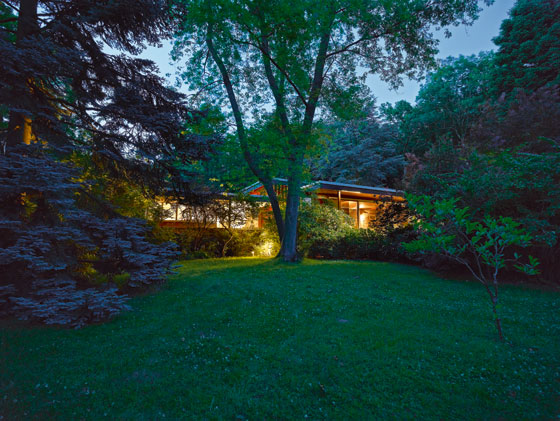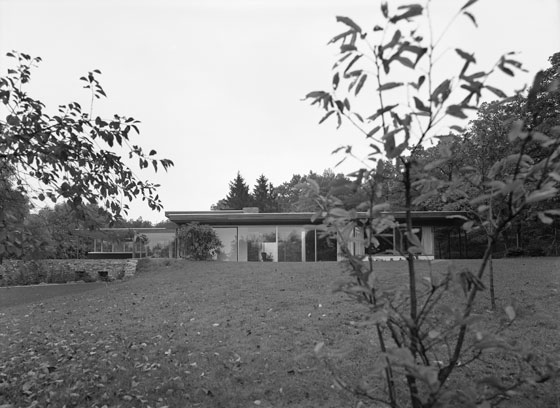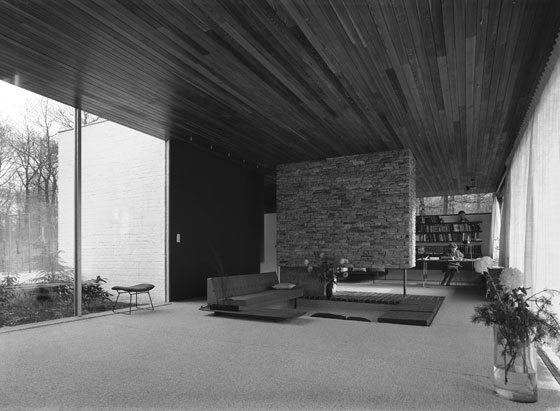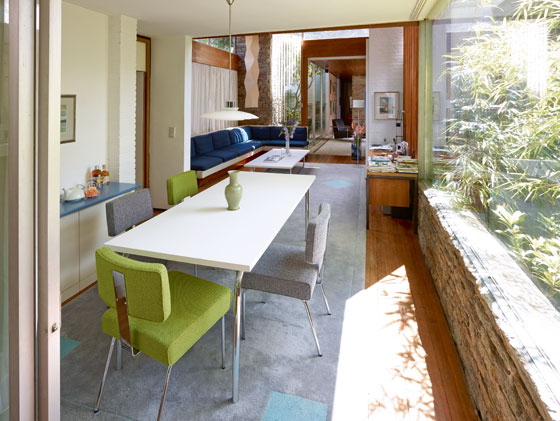The Revenant
Brand story by Neutra by VS
Tauberbischofsheim, Allemagne
30.03.16
Cette page a été archivée et n'est plus mise à jour
Hear the name RICHARD NEUTRA and you’d be forgiven for thinking first and foremost of the legendary Austrian-American architect’s sun-kissed Californian villas. But, as premium German furniture manufacturer VS highlights through a unique staging, Europe provided fertile creative ground for his pioneering work, too.
Respected German manufacturer VS completes the circle by introducing a considered edit of Richard Neutra's classic furniture designs into the architect's 1964 Haus Rang (Königstein im Taunus, Germany) for the first time
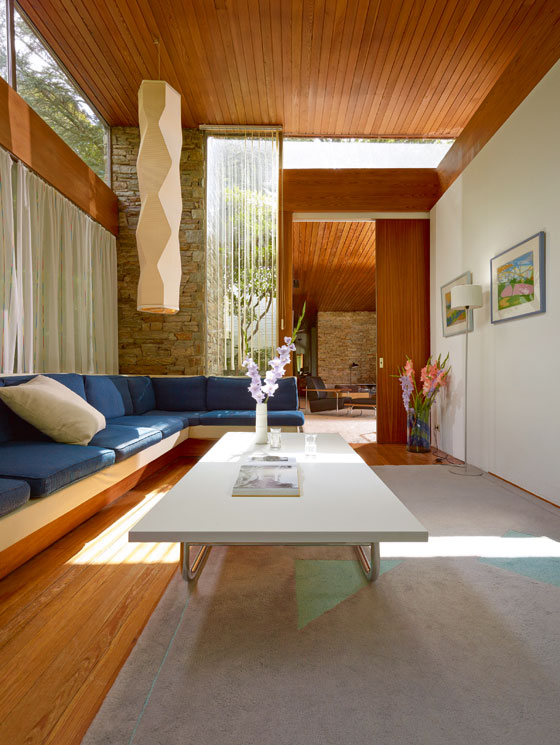
Respected German manufacturer VS completes the circle by introducing a considered edit of Richard Neutra's classic furniture designs into the architect's 1964 Haus Rang (Königstein im Taunus, Germany) for the first time
×When words or other forms of expression are adopted by other cultures, only, in turn, to be reimported into their original language or context, they acquire a fascinating dual character, being both familiar and at the same time exotic.
Take the everyday English word ‘ticket’, for example. Originating from the French ‘étiquette’, it’s now used by millions of self-respecting Francophones in its anglicised version – le ticket.
When celebrated Austrian-born architect and designer Richard Neutra bought his ticket for the New World in 1923, having studied under Adolf Loos at the Vienna University of Technology and completed a stint at office of Erich Mendelsohn, little did he know what lay ahead – that he would become a seminal figure in the small group of architects, among them Charles Eames and Pierre Koenig, that helped shape the way aspirational Americans imagined what it looked like to live in a thoroughly modern way. And that, later, discerning architectural clients back in Europe would turn to Neutra to bring home, as it were, a bit of that exported modernism when planning their homes.
Open-plan, light-filled living: Richard Neutra brought sensual California dreaming to Europe in the 1960s in the form of, among other striking villas, the Haus Rang, commissioned by a Frankfurt University professor for his young family

Open-plan, light-filled living: Richard Neutra brought sensual California dreaming to Europe in the 1960s in the form of, among other striking villas, the Haus Rang, commissioned by a Frankfurt University professor for his young family
×Neutra will, of course, forever be associated with the light-filled, Southern Californian private residences he created in the 1940s and 50s – those flat-roofed, ribbon-glazed villas, such as the Kaufmann House in Palm Springs (1947) and the Tremaine House in Montecito (1948), which married the rationalism of the international style with a softer, more natural material language, one that often featured wood and quarrystone. As Neutra’s renown increased Stateside – his profile aided in no small part by the seductive images that acclaimed photographer Julius Shulman took of his houses and which circulated via magazines and other publications – so too did his stock on the other side of the Atlantic.
One would-be client back in the Old World interested in engaging the services of Neutra for a house he and his wife had been planning to build over over a decade was a certain Professor Martin Rang, who worked at Frankfurt University. Having secured a large, wooded plot in Königstein im Taunus from his employer, he contacted the architect directly in 1960, impressed by the latter’s singularly artistic approach to architecture – in particular the way he managed to synthesise a confident creative expression with a genuine and human-centred understanding of the specific needs of each of his project’s residents.
Austrian-American architect Richard Neutra, whose residential projects on both sides of the Atlantic – such as the Kaufmann House in Palm Springs (1947) and the Tremaine House in Montecito (1948) – became the poster-boys for modern living
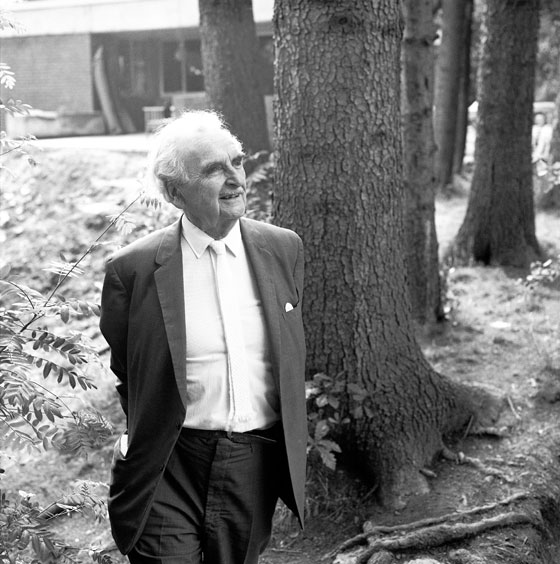
Austrian-American architect Richard Neutra, whose residential projects on both sides of the Atlantic – such as the Kaufmann House in Palm Springs (1947) and the Tremaine House in Montecito (1948) – became the poster-boys for modern living
×Akin to the softer modernism that found its articulation in the work of such Scandinavian architects and designers as Alvar Aalto, Neutra’s designs for private clients looked and felt different to the arch modernism of some of his earlier projects, for example his 1929 Lovell House in Los Angeles, which clearly drew on the more austere language of the Bauhaus avant-garde. Furthermore, the open and warm California dreaming that Neutra was offering fitted perfectly with the desire in a post-war, traumatised Europe for architecture that brought healing benefits with it through its linking of inside and outside, and its connection in material terms with nature.
What Neutra delivered in Königstein is, like all of his projects, nothing short of a Gesamtkunstwerk, an environment that offers a harmonious composition of structure, light, furniture and nature. Completed in 1964, and subject since then to relatively few modifications, the Haus Rang was to provide its new inhabitants with an inspiring place in which to live, work and, for the three children of the residence, to grow up.
Neutra's iconic Boomerang chair (top) and his rational yet comfortable Alpha Seating (above, foreground) form part of a unique staging at the Haus Rang, where architecture and design produce a compelling dialogue
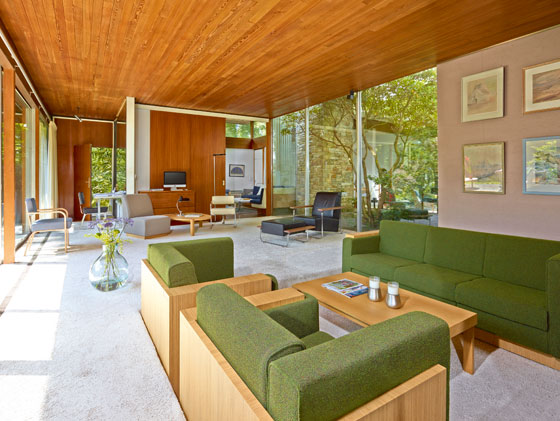
Neutra's iconic Boomerang chair (top) and his rational yet comfortable Alpha Seating (above, foreground) form part of a unique staging at the Haus Rang, where architecture and design produce a compelling dialogue
×With its emphatic horizontal articulation (underscoring the house’s commitment, so to speak, to being close to the ground and to nature) counterbalanced by its cantilevered roofs that seem to float, this is a place that provides nourishment for the senses through its play of intersecting planes, volumes, light and judicious use of visually textural and highly tactile natural materials. The living wing of the house, which, in addition to the master bedroom, features an office divided off from the living room by means of a freestanding fireplace, faces southeast and receives generous amounts of sunshine (climatic conditions permitting, of course). The kitchen and dining room face northwest, while the children’s wing is oriented northeast. The various wings are connected by a large hallway, whose extra-high ceiling, among other things, communicates its functional difference as an internal junction.
If you were to look through the typically modernist, full-height glazing the Haus Rang enjoys, you’d see that Neutra has been brought home in another sense, too. Established German furniture manufacturer VS, which acquired the licences to Neutra’s most important designs a couple of years ago and has, since then, lovingly reintroduced them into production, has completed the picture by staging the villa with a selection of the architect’s furniture, creating a fascinating dialogue between the products and their spatial context.
Delivering on both aesthetic and utilitarian fronts, the dual-height, aptly named Camel Table, originally designed for Neutra's Logar House in Granada Hills, Los Angeles, draws inspiration from the way the animal sits and stands
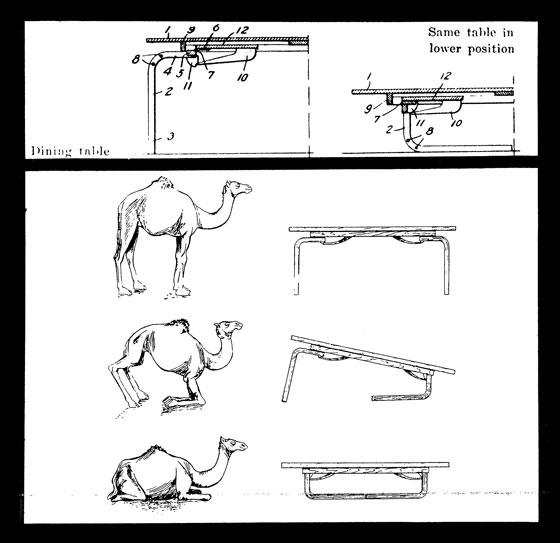
Delivering on both aesthetic and utilitarian fronts, the dual-height, aptly named Camel Table, originally designed for Neutra's Logar House in Granada Hills, Los Angeles, draws inspiration from the way the animal sits and stands
×Neutra applied the same amount of consideration to designing furniture as he did buildings. Indeed, for him, creating chairs and other seating, as well as dining and occasional tables, was in itself an architectural act. An integral part of many of the Californian homes that he designed from 1920s through to the 1940s was the authoring of highly sensual furniture pieces that not only filled the spaces into which were placed, but also served to shape those very spaces.
Although the Haus Rang was originally never fitted out with Neutra furniture when it was completed, the introduction by VS of a number of his classic designs – such as the iconic Boomerang Chair, first designed for his Channel Heights development in San Pedro in the early 1940s; his inviting Alpha Seating, originally developed for the 1929 Lovell House; and the evocatively midcentury Tremaine Chair, first used at Tremaine House (1948) in Santa Barbara – makes perfect sense.
The Haus Rang in Königstein im Taunus, Germany, completed in 1964 – one of a number of Neutra's European projects, completed in the final decade of the architect's life

The Haus Rang in Königstein im Taunus, Germany, completed in 1964 – one of a number of Neutra's European projects, completed in the final decade of the architect's life
×Perhaps the design that resonates most clearly when placed into the Haus Rang is the Camel Table. This ingenious, dual-height table, which takes a cue from how a camel sits down and which was originally conceived by Neutra for his 1951 Logar House in Granada Hills, Los Angeles, dovetails fully with his architectural ethos. Its refined aesthetic presence belies its highly functional nature, one that addresses user need squarely; for swivelling its tubular-steel legs transforms it quickly from low-slung coffee table to dining table.
Like table, like house – Neutra sought to engage the body, the mind and the senses. Now, that’s a real home-coming.
.....
RICHARD NEUTRA EXHIBITION IN ZURICH:
Neutra – die neuen Möbel: Architektur und Einrichtung
30 March to 30 April 2016
Architekturforum Zurich
Brauerstrasse 16
8004 Zürich
Phone: 00 41 (0)43 317 1400
Email: mail@af-z.ch
.....

